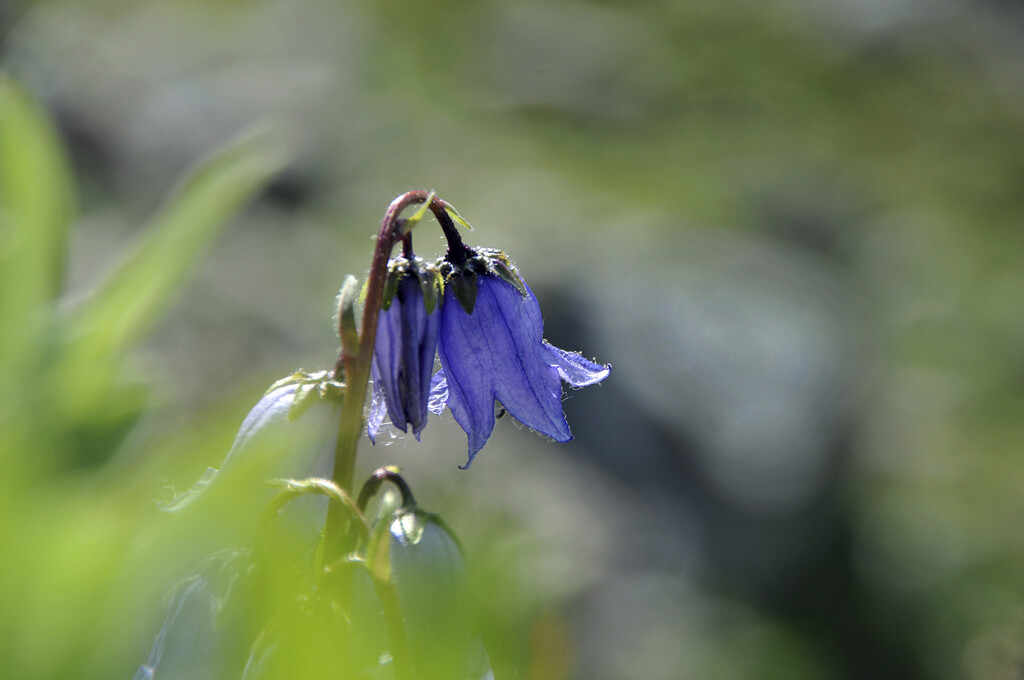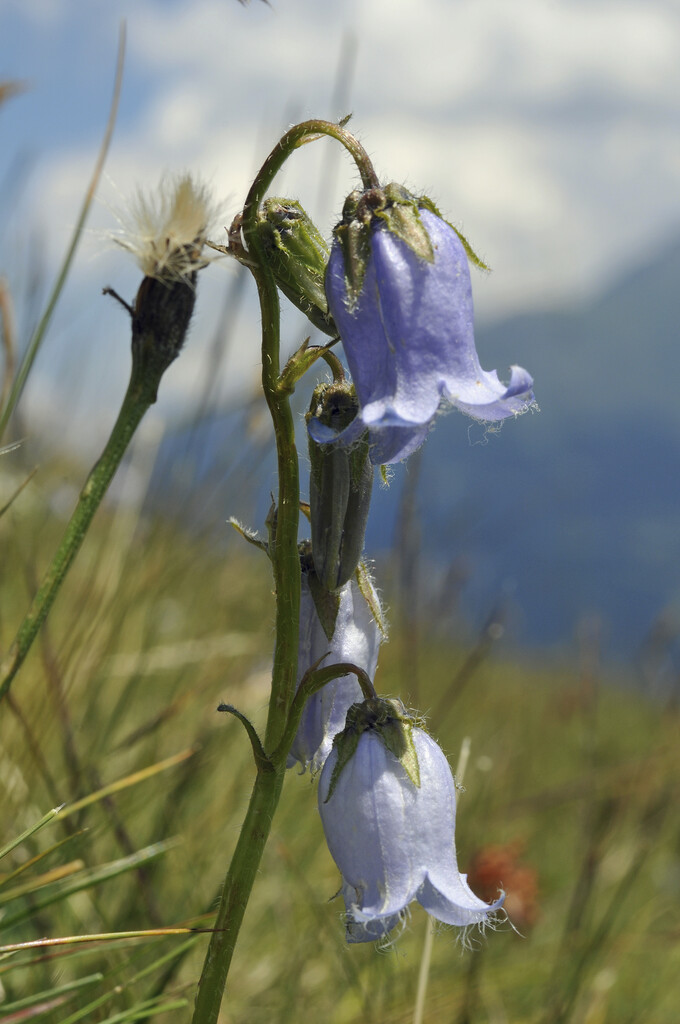Campanula barbata
bearded bellflower
A biennial or short-lived perennial, to around 30cm high, with narrowly lance-shaped, slightly toothed, hairy green leaves at the base of the plant. In early summer, upright stems bear nodding, bell-shaped, pale blue, pale violet or sometimes white flowers, with petals edged with fine white hairs
Size
Ultimate height
0.1–0.5 metresTime to ultimate height
2–5 yearsUltimate spread
0.1–0.5 metresGrowing conditions
Moisture
Moist but well–drained, Well–drainedpH
Acid, Alkaline, NeutralColour & scent
| Stem | Flower | Foliage | Fruit | |
| Spring | Green | |||
|---|---|---|---|---|
| Summer | Blue Purple White | Green | ||
| Autumn | Green | |||
| Winter |
Position
- Full sun
- Partial shade
Aspect
South–facing or West–facing
Exposure
Exposed or Sheltered Hardiness
H7Botanical details
- Family
- Campanulaceae
- Native to GB / Ireland
- No
- Foliage
- Deciduous
- Habit
- Clump forming
- Genus
Campanula may be annuals, herbaceous or evergreen perennials, with bell or star-shaped, often blue, flowers in late spring or summer
- Name status
Correct
- Plant range
- Norway, Alps
How to grow
Cultivation
Thrives in well-drained soil in sun or light, part-day shade. Protect from excess winter wet
Propagation
Propagate by seed; plants will often self-seed in place
Suggested planting locations and garden types
- Cottage and informal garden
- Wildflower meadow
- Banks and slopes
- Flower borders and beds
Pruning
Deadhead to encourage more flowers
Pests
Diseases
May be susceptible to powdery mildews and rust diseases
Love gardening
Sign up to receive regular gardening tips, inspiration, offers and more
View our Privacy Policy
Get involved
The Royal Horticultural Society is the UK’s leading gardening charity. We aim to enrich everyone’s life through plants, and make the UK a greener and more beautiful place.

